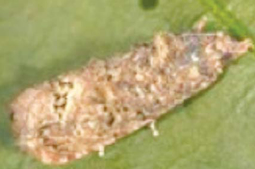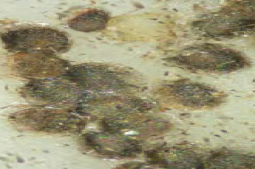Currently, a lot of our growers are scouting. They are also doing physical checks in the greenhouse and pack house and have set up mass traps in and outside the greenhouses.
 Alittle animal causes a big fuss in the ornamental and horticultural industry today. Dutch media reports on how an increase in the discovery of the false codling moth (Thaumatotibia leucotreta) in roses imported from Kenya and Tanzania could form a threat to floricultural trade. But what is going on?
Alittle animal causes a big fuss in the ornamental and horticultural industry today. Dutch media reports on how an increase in the discovery of the false codling moth (Thaumatotibia leucotreta) in roses imported from Kenya and Tanzania could form a threat to floricultural trade. But what is going on?
The fuss is all about the false codling moth. Now today Dutch media report that increasing numbers of the false codling moth could threaten both the rose imports as well as the Dutch horticultural industry.
Two years ago, the false codling moth was classified by Europe as a quarantine pest, recommending its member countries to regulate its presence. And not without a reason. “It is a serious threat, but the risks should not be exaggerated”, says entomologist Gerben Messelink of Wageningen University & Research.
Dutch resistance
The Dutch fruit & vegetable growers and traders fear for the damage on their crops. The moth isn’t a threat to humans but could cause damage to vegetable crops, especially peppers. “Such a moth lays eggs in the rosebuds in Kenya and the larvae come out at the consumer’s home”, explains Messelink. “For example if a rose bouquet ends up in the bin and there is a possibility that the moth will spread in the greenhouse area.” If the false codling moth would be found in Dutch crops, it could also pose a threat to the Dutch fruit & vegetable trade.
To avoid this, the inspections on Kenyan and Tanzanian roses have been increased already. Currently, 10 percent of the Kenyan roses are being inspected and 50 percent of the Tanzanian roses. The VGB (Association of Wholesalers in Horticultural Products) warns for a 100% inspection on rose import.
Reaction Kenyan Flower Council
In Africa, they are doing everything in their power to keep the Moth out of the rose crop. According to Clement Tulezi of Kenya Flower Council (KFC), there is no significant increase in the number of false codling moth. “Sometimes the numbers are higher, sometimes lower, but no structural increase in discovered pest. We are doing everything to tackle the problem because Europe covers 80 percent of our export markets – and when the numbers keep increasing, we fear the consequences.”
“For this reason, we work together with Kenya Plant Health Inspectorate Service (KEPHIS), the Dutch Embassy in Nairobi, several importers and the European Commission. Currently, a lot of our growers are scouting. They are also doing physical checks in the greenhouse and pack house and have set up mass traps in and outside the greenhouses.”
Invisible moth
It is a challenge to trace the moth as one cannot see if there is a moth inside the flower from outside. “In the cold store, the moth stays dormant and it wakes up when temperatures are rising, so when they are at their destination. However, I doubt if the moth can survive in the Dutch climate as an indigenous Kenyan species. But investing in precautionary measures is necessary. Also for us. Europe does not have the capacity to inspect all flowers, but also we are dealing with costs that will increase if inspections increase. For everyone, it will be better if the inspection percentages will go back again to 5% or 0%. We are doing our utmost best to reach this again.”
100% inspections  The Dutch Food and Drug Administration, together with Quality Control Bureau (KCB) are responsible for the inspections and they do not expect the 100% inspections will come into practice soon. They told a Dutch newspaper (NOS) that the inspection percentages are being determined in Brussels (Belgium). Also risk assessments are being conducted there.
The Dutch Food and Drug Administration, together with Quality Control Bureau (KCB) are responsible for the inspections and they do not expect the 100% inspections will come into practice soon. They told a Dutch newspaper (NOS) that the inspection percentages are being determined in Brussels (Belgium). Also risk assessments are being conducted there.
The numbers behind the news
So who’s right about the numbers? Is there an increase in the finding of the false codling moth? Some of the statistics show that false codling moth in the first half of 2019 are already higher than in 2018 total. It seems a sharp increase, but a comment must be made. The number of inspections on the shipments out of Kenya, for example, has been doubled, from 5 to 10% and from Tanzania even from 15% to 50% – so that more moths were found seems to be a logical result. However, there is something going on in the number of findings. While the European Commission reported a decrease in 2018 in Europe compared to the previous year, the Netherlands reported an increase, as shown in the report of the European Commission.
